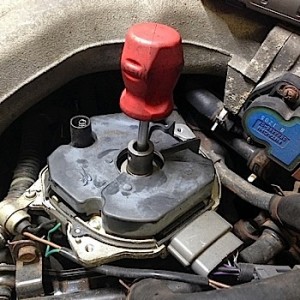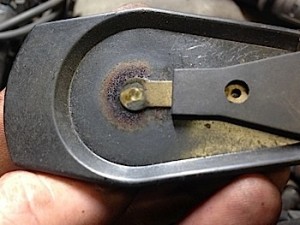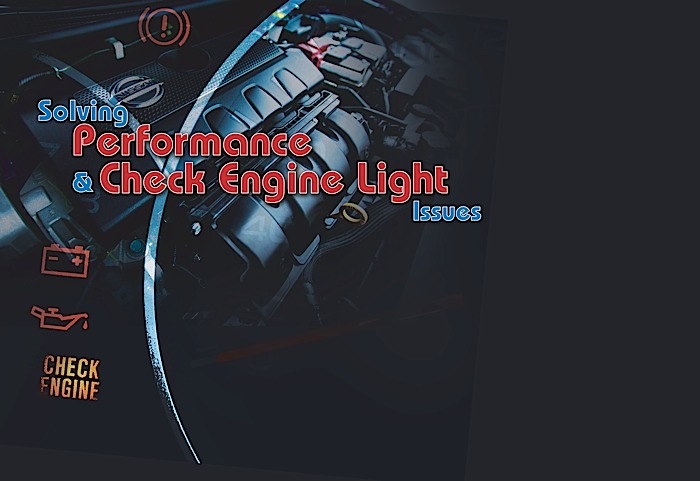The Six Cylinders
The six-cylinder-powered Maxima, Quest and Nissan pickups will have us seeing some of the same issues with the cam and crank sensors as their four-cylinder counterparts, but keep in mind that these sensors are looking at the relationship between the crank and cams. On the earlier twin-cam Maximas, the most common failure was with the ignition coils. If you’re lucky, you’ll get a solid misfire and code, but, more often than not, you’ll be faced with a P1320 “Ignition Control Signal Circuit Malfunction” code that isn’t cylinder-specific but indicates a coil failure. At this point, you and the customer have a decision to make. Many times, the customer doesn’t have a driveability complaint, and it can be a hard sell to convince them to replace all six coils. Oftentimes, our customers choose to continue to drive the car until the cylinder in question throws a misfire code rather than replace all six coils as Nissan recommends.
While we don’t see the amount of coil failures we used to, it seems that the P0171 system lean code is more prevalent than it was in the past. A simple code to understand, the ECU sets this code when the system has to add more fuel than expected to maintain the desired air/fuel level.

Our first step when looking at one of these is to check the freeze-frame data on the scanner to see the conditions when the code was set. If it’s lean at idle, we’ll be looking for unmetered air finding its way into the engine (a vacuum leak); if the code was set at highway speeds, we would be thinking fuel delivery would be the likely issue.
When we talk about fuel delivery today, it includes everything from the fuel pump, filters and pressure regulator, as well as air mass sensor, air/fuel ratio sensors, temp sensors and injectors. If you should get a lean code for one bank, your first check should be to look at the fuel trim numbers for the other bank to see if it’s also lean.
Short-term trim will tell us what’s happening now, while the long-term number tells us what has been happening in the past and what the ECU has done to compensate. We are looking for numbers near zero when looking at generic OBD data. If you see long-term in positive 20 range with short-term right near it, you know it’s lean even if it hasn’t set a code for that bank yet. Armed with this information, you can now look at what will have the engine running lean, without concentrating on just one bank.
If freeze frame has you looking for a problem at idle speed, there are a couple of spots to concentrate on after you’re sure that the air/fuel ratio, oxygen sensors and other sensors are working as they should. Take a few minutes looking at live data: Are the temp sensors reporting as expected? Are all the exhaust sensors responding as you would expect to throttle input? Look at the manifold vacuum and short-term trim; if the vacuum is good at idle with short-term near zero, the problem may be intermittent.
It is worth noting that with many makes the long-term trim is returned to zero when codes are cleared. That is not the case with Nissans. In order to clear the trim memory, you have to use the memory reset option on an enhanced scanner or disconnect the power supply to the ECU.
If the car is in the shop with low manifold vacuum and high short-term trims, look for unmetered air finding its way in. Being old school, I’ll usually start with my stethoscope listening for leaks at cracked or soft hoses. I’ll also check that all the air intake ducting and hoses are intact and secure so all the air is passing through the air mass sensor. Hidden vacuum leaks can be detected at the evap purge valve or EGR system. If the EGR is leaking, it will be warm to the touch.
As much as I value my stethoscope, I’m willing to admit that smoking the intake is the more efficient method of detection. If you find yourself tracking down a leak on a Quest, be aware that there is a vacuum reservoir mounted on the intake manifold equipped with a one-way valve. This device will not see the smoke introduced in the manifold. With some reports of these devices leaking, be sure to take the time to check it.
If the system lean code was set at higher speed and rpm and there is no report of lackluster power, a bad mass air meter, intake plumbing or exhaust sensor could be the culprit. I make sure the air intake is intact before heading out on the road test.
Next, I bring up the PIDs that I want to look at while on the road. In this case, I will be looking at calculated load, coolant and intake air temp sensor, and short- and long-term trims on both banks. This will give us a good overall look at fuel delivery to the cylinders. I like to use calculated load to look at the air mass sensor — if you can get to near 100 on calc load on a wide-open throttle uphill pull, it’s a safe bet the sensor is doing its job.
If you can’t do better than 60, it’s time to look closely at the sensor. If cleaning improves the number, you know you’re on the right track. You can get a good indication of how the exhaust sensors are working by watching the trim numbers. If the short term is quickly responding to the inputs of the driver, it’s safe to assume they are reporting as expected and not causing the problem.
You’ve probably noticed that I haven’t mentioned fuel pressure or volume testing. If we were dealing with a power complaint and seeing a lean code, the pressure volume test would have been one of the first tests I would’ve performed. However, while I’ve seen fuel pump failures on Nissans, I have never experienced a pump causing a lean code.
The same can be said for exhaust leaks tricking the O2 sensors into thinking the engine is lean. I would address any exhaust leaks before going too deep into the diagnostic process, but experience tells me that if we have a recurring lean code, we should be concentrating on the previously discussed items.














